Hajj Rituals
Hajj, the spiritual odyssey to Makkah, is not just an annual pilgrimage; it's a cornerstone of the Islamic faith, deeply embedded in the hearts of Muslims across the globe. As one of the Five Pillars of Islam, Hajj is more than a journey: it's a rite of passage. It beckons every Muslim who is physically and financially capable to embark on this sacred expedition at least once in their lifetime. This pilgrimage transcends physical boundaries, weaving a tapestry of spiritual connection, linking believers to the rich tapestry of their faith's history and the footsteps of their ancestors.
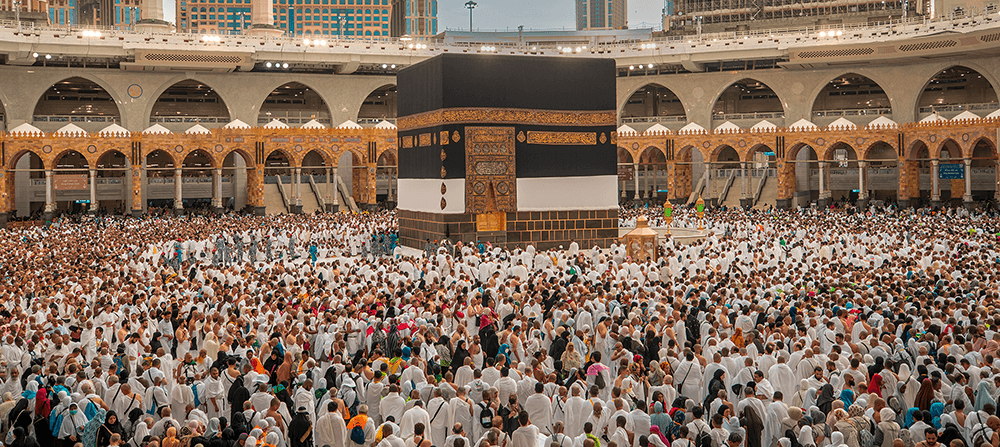
The Kaaba and Tawaf:
The heart of Hajj lies in the Kaaba, a sacred cube-shaped structure within Al-Masjid Al-Haram, the Grand Mosque in Makkah. Pilgrims commence their journey by circumambulating the Kaaba, a ritual known as Tawaf. This act symbolizes the unity of the Muslim community and their unwavering devotion to the one true God.

Sa'i:
Following Tawaf, pilgrims engage in Sa'i, which involves running or walking between the hills of Safa and Marwah. This ritual commemorates Hagar, the wife of Prophet Ibrahim, and her son Isma'il's search for water. It symbolizes devotion, endurance, and faithfulness.
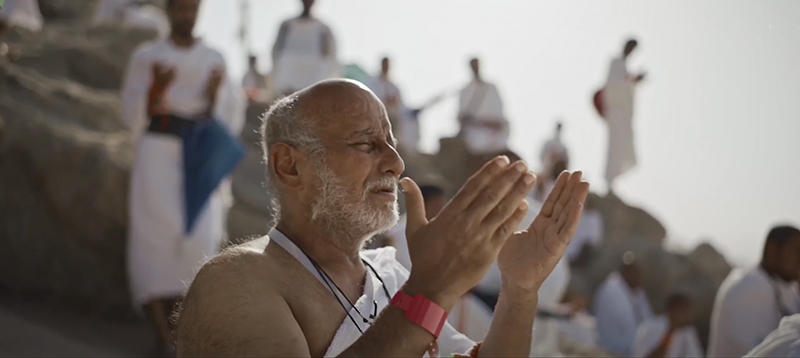
The Day of Arafat:
The apex of Hajj occurs on the 9th day of Dhul-Hijjah, at the expansive plain of Arafat. Pilgrims congregate to stand in prayer, seeking God's forgiveness and mercy. All pilgrims wear simple white garments, underscoring the equality of all Muslims before God.
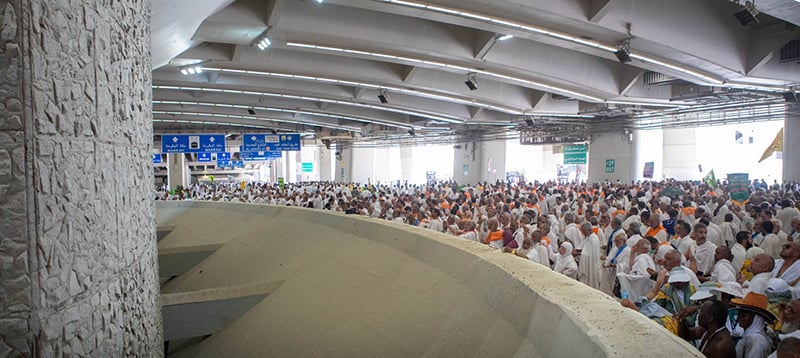
Muzdalifah and Rami:
Pilgrims spend a night at Muzdalifah, where they collect pebbles for the symbolic stoning of the devil, Rami. Throwing pebbles symbolizes the rejection of evil, mirroring the actions of Prophet Ibrahim.
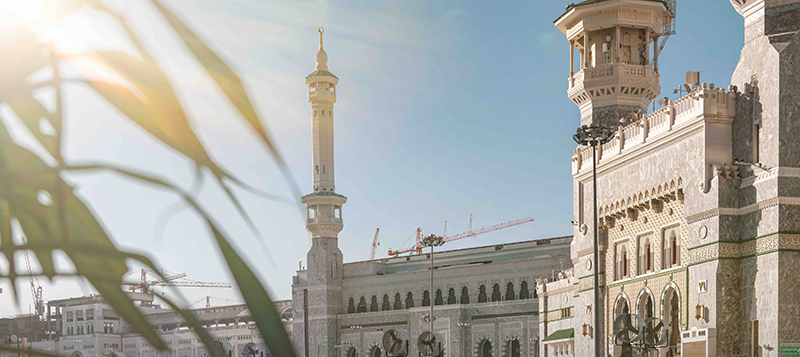
Sacrifice and the Feast:
Following Rami, pilgrims engage in the sacrifice of an animal, a tradition commemorating Prophet Ibrahim’s test of faith. The meat is shared with those in need, reinforcing the values of charity and devotion.
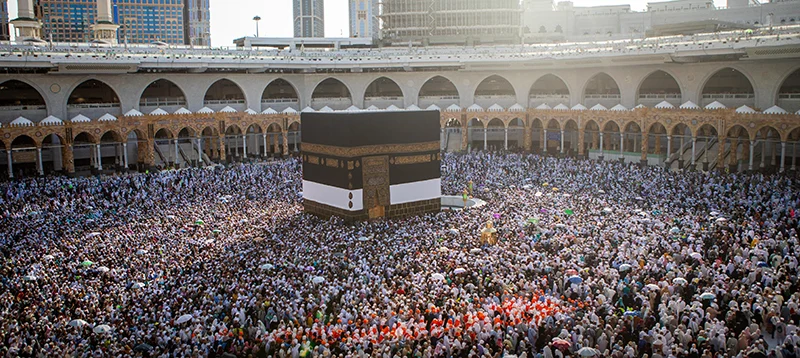
Tawaf Al-Ifadhah and Tawaf Al-Wadaa:
As the pilgrimage concludes, pilgrims perform Tawaf Al-Ifadhah and Tawaf Al-Wadaa, a farewell to the sacred city of Makkah. This marks the spiritual fulfillment of their Hajj journey.
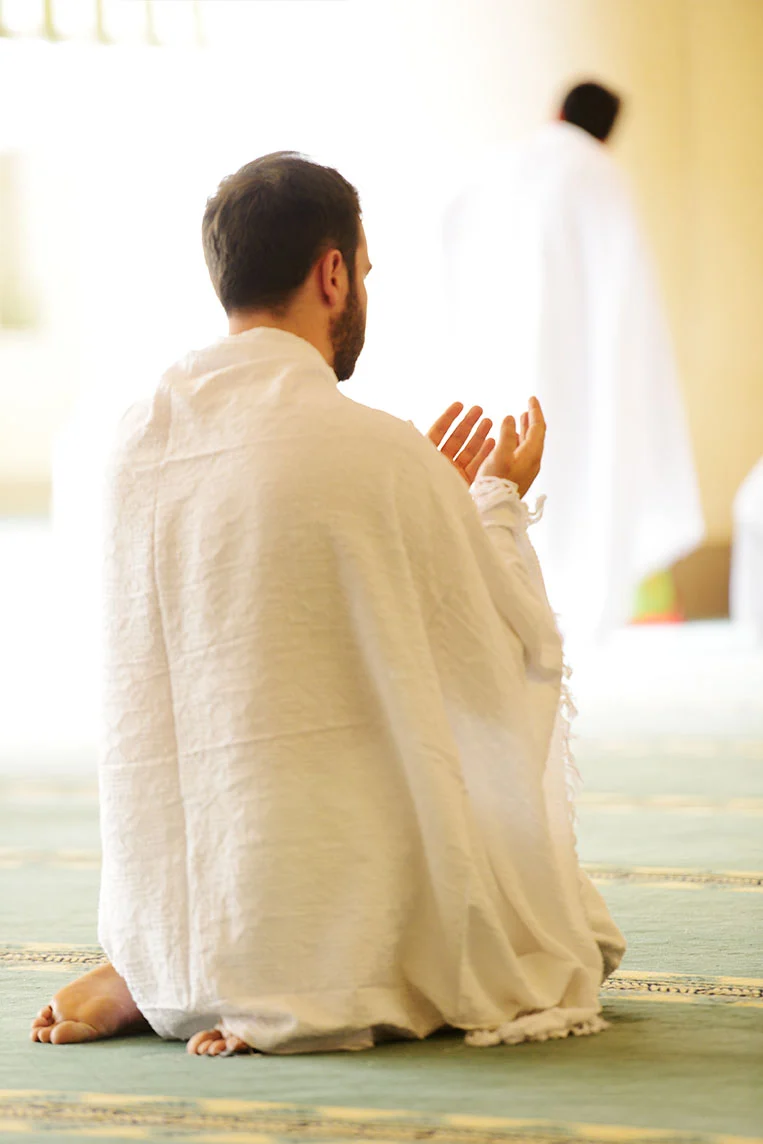
Al Ihram (The State of Consecration):
Ihram is a sacred state of ritual consecration and a specific dress code that Muslim pilgrims assume before embarking on the Hajj or Umrah pilgrimage. It involves wearing specific clothing and adhering to restrictions to enhance the pilgrim's spiritual focus and devotion during their journey.
For men, wearing the Ihram attire is mandatory, while women can wear regular clothing. When the pilgrim is on a plane approaching the designated Miqat point by air, they must make their intention for Ihram. Upon reaching the Miqat area and reciting the Talbiyah, the pilgrim says:
"Labbaik Allahumma Labbaik, Labbaik La Shareeka Laka Labbaik. Innal-Hamda Wan-Ni'mata Laka Wal-Mulk, La Shareeka Lak."
The pilgrim continues to recite the Talbiyah until reaching the holy places. During Ihram, pilgrims must adhere to specific prohibitions and restrictions.
Three Different Modes of Pilgrimage Concerning Ihram
- 1. Al-Tamattu
In this mode, a person enters the state of Ihram for Umrah alone, saying, "Allahumma Labbaik 'Umrah." After completing the Umrah, they exit the state of Ihram. Later, when the time for Hajj arrives, they enter the state of Ihram for Hajj from Makkah and must offer a sacrifice.
- 2. Al-Ifrad
In this mode, a person enters the state of Ihram for Hajj alone, saying, "Allahumma Labbaik Hajj." They do not need to offer a sacrifice.
- 3. Al-Qiran
This mode involves entering the state of Ihram for both Hajj and Umrah together, saying, "Allahumma Labbaik Hajj and 'Umrah." The Qiran pilgrim follows the same actions as the Ifrad pilgrim but must also offer a sacrifice.
Hajj Rituals
Ghusl (Ritual Bath)
It is advised to take a complete bath before entering Ihram.
Trimming or Shaving Hair
Men may trim their hair, and women can cut a small portion.
Wearing Clean Clothing
Wear clean and pure clothing for Ihram, consisting of two white, unsewn sheets.
Perfume
A light fragrance is recommended but should not be applied directly to the Ihram sheets.
Prayer
Perform a voluntary two-unit (Rak'ah) prayer and sincerely supplicate, seeking Allah's blessings for your pilgrimage.
Recitation of Talbiyah
Recite the Talbiyah ("Labbaik Allahumma Labbaik...") to declare your intention and readiness for the pilgrimage.
Please note that these actions are not obligatory, meaning that the pilgrimage remains valid if they are not performed for any reason.
Suggested and Preferred Acts (Sunnah) During Hajj
These suggested acts enhance the spiritual experience of Hajj and deepen your connection to the pilgrimage's profound significance.
- Recitation of Talbiyah:
Continuously recite the Talbiyah ("Labbaik Allahumma Labbaik...") as you enter Ihram and throughout the pilgrimage.
- Du'a (Supplication):
Engage in heartfelt and sincere supplications, seeking forgiveness, guidance, and blessings from Allah.
- Staying at Arafat:
Spending the day at Arafat is a significant Sunnah. It is the most crucial part of Hajj, and standing in worship and supplication during this time is highly recommended.
- Stoning the Pillars:
While stoning the pillars in Mina, follow the tradition of the Prophet Muhammad by throwing small stones at the pillars calmly and without causing harm.
- Tawaf Al-Wadaa (Farewell Tawaf):
Before leaving Makkah, perform an additional Tawaf called Tawaf Al-Wadaa as a farewell gesture.
- Qurbani (Sacrifice):
An animal sacrifice is recommended for those performing Hajj. This act symbolizes the sacrifice of Prophet Ibrahim and is a Sunnah during the days of Hajj.
- Seeking Forgiveness and Repentance:
Hajj is an excellent opportunity to seek forgiveness for past sins and sincerely repent.
- Visiting Al-Masjid Al-Nabawi in Al-Madinah:
If your journey allows, visit the Prophet's Mosque in Al-Madinah and offer salutations to the Prophet Muhammad
- Recitation of the Quran:
Recite and reflect upon the Quran during your Hajj journey for spiritual benefit.
- Kindness and Patience:
Display patience and kindness towards fellow pilgrims and those you encounter during your journey.
